Did you know that nestled within Hoi An Ancient Town, a UNESCO World Heritage Site, lies a captivating cultural gem? I’m talking about the Japanese Bridge in Hoi An, a stunning architectural masterpiece that transports you back to the 17th century, when Japanese businessmen left an indelible mark on this enchanting town in Central Vietnam.
Also known as Cau Pagoda or the Japanese Covered Bridge, this iconic structure is steeped in history, folklore, and cultural significance, making it one of the most sought-after destinations for travelers yearning to explore the rich tapestry of Vietnam’s past.
With its intricate design, combining elements of Vietnamese, Japanese, and Chinese cultures, the Japanese Bridge awakens your senses with its sprawling red lacquered wood, symbolic yin and yang patterns, and charming small corridors.
There’s more, and this guide will go through everything you should know about the bridge.
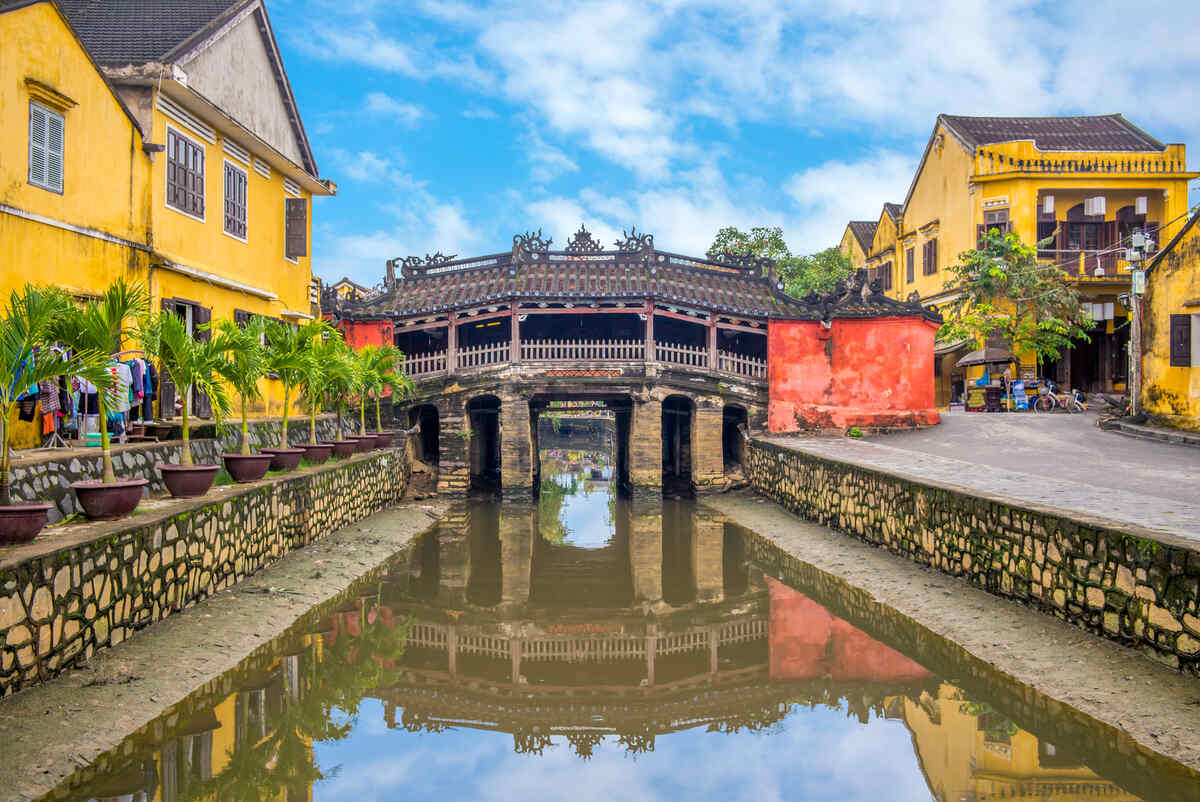
Table of Contents ⬇️
ToggleJapanese Bridge in Hoi An – Overview
Let’s start this guide with some information you should know before visiting, such as key facts, the Japanese Covered Bridge’s location, getting there, and more.
Key Points
- The Japanese Bridge in Hoi An was built in the 17th century with the assistance of Japanese businessmen.
- It is associated with the legend of Namazu, a mythical monster believed to cause earthquakes and floods.
- In 1719, Lord Nguyen Phuc Chu named the bridge “Lai Vien Kieu” during his visit to Hoi An.
- The bridge is also known as Cau Pagoda and Japanese Covered Bridge.
- It was recognized as a National Historic – Cultural Heritage Site in 1990.
Where is the Japanese Bridge in Hoi An?
The Assembly Hall is conveniently located near the river, not far from the night market, in the heart of Hoi An. Its central location allows you to easily access other attractions and amenities in the area.
How to Get There?
Hoi An isn’t huge, so getting to the bridge is straightforward. If you’re staying in the old town, a simple walk will get you there. For those staying further out, a bike ride or a short taxi trip is your best bet.
If you’re coming from Da Nang City, you can rent a motorbike or call a Grab taxi to the old town and easily walk to the assembly hall.
Renovations of the Japanese Bridge in Hoi An in 2024
In 2024, Hoi An’s Japanese Bridge is getting a bit of a facelift. The plan is to fix it up without losing any of the charm that makes it a must-see spot.
The plan is to get all the work done by the end of the year, so it won’t be a construction site for long. It’s all about keeping the bridge standing strong and looking good. So if you visit Hoi An in 2024, you might not see and cross the Japanese Covered Bridge in Hoi An.
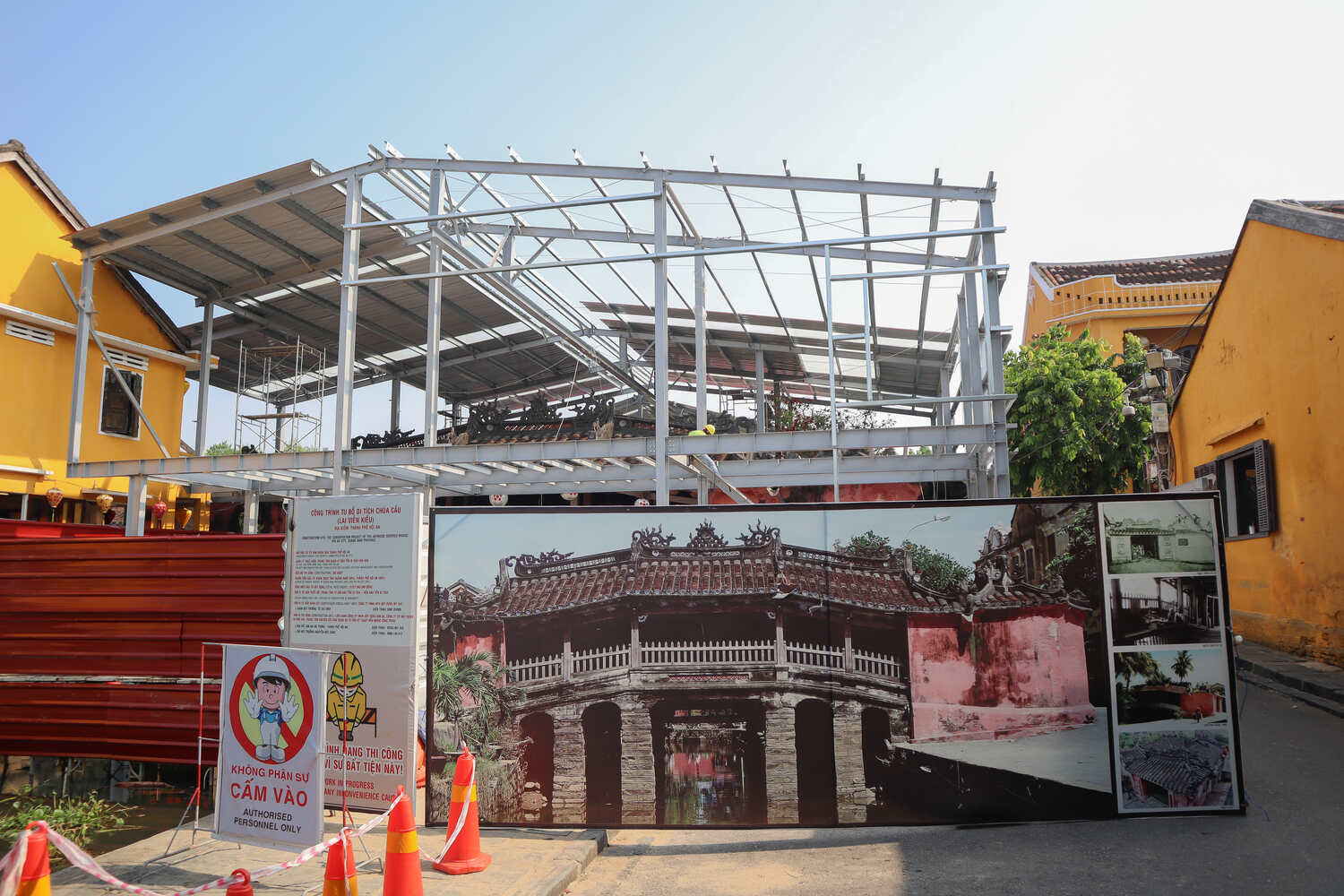
History of the Japanese Bridge in Hoi An
The history of the Japanese Bridge in Hoi An can be traced back to the 17th century when it was constructed with the assistance of Japanese businessmen. This iconic bridge, also known as Cau Pagoda and Japanese Covered Bridge, holds immense cultural and historical significance in Hoi An.
According to local legend, the bridge is associated with Namazu, a mythical monster believed to cause earthquakes and floods. Its construction was a testament to the resilience and ingenuity of the Japanese community living in Hoi An during that time.
In 1719, the bridge gained even more prominence when Lord Nguyen Phuc Chu visited Hoi An and named it “Lai Vien Kieu” in honor of the nobleman who had funded the renovation. Since then, the bridge has become an integral part of Hoi An’s heritage, weaving together Vietnamese and Japanese cultures.
In recognition of its historical and cultural value, the Japanese Bridge was designated as a National Historic – Cultural Heritage Site in 1990. It stands as a testament to the harmonious fusion of architectural styles and the vibrant history of Hoi An.
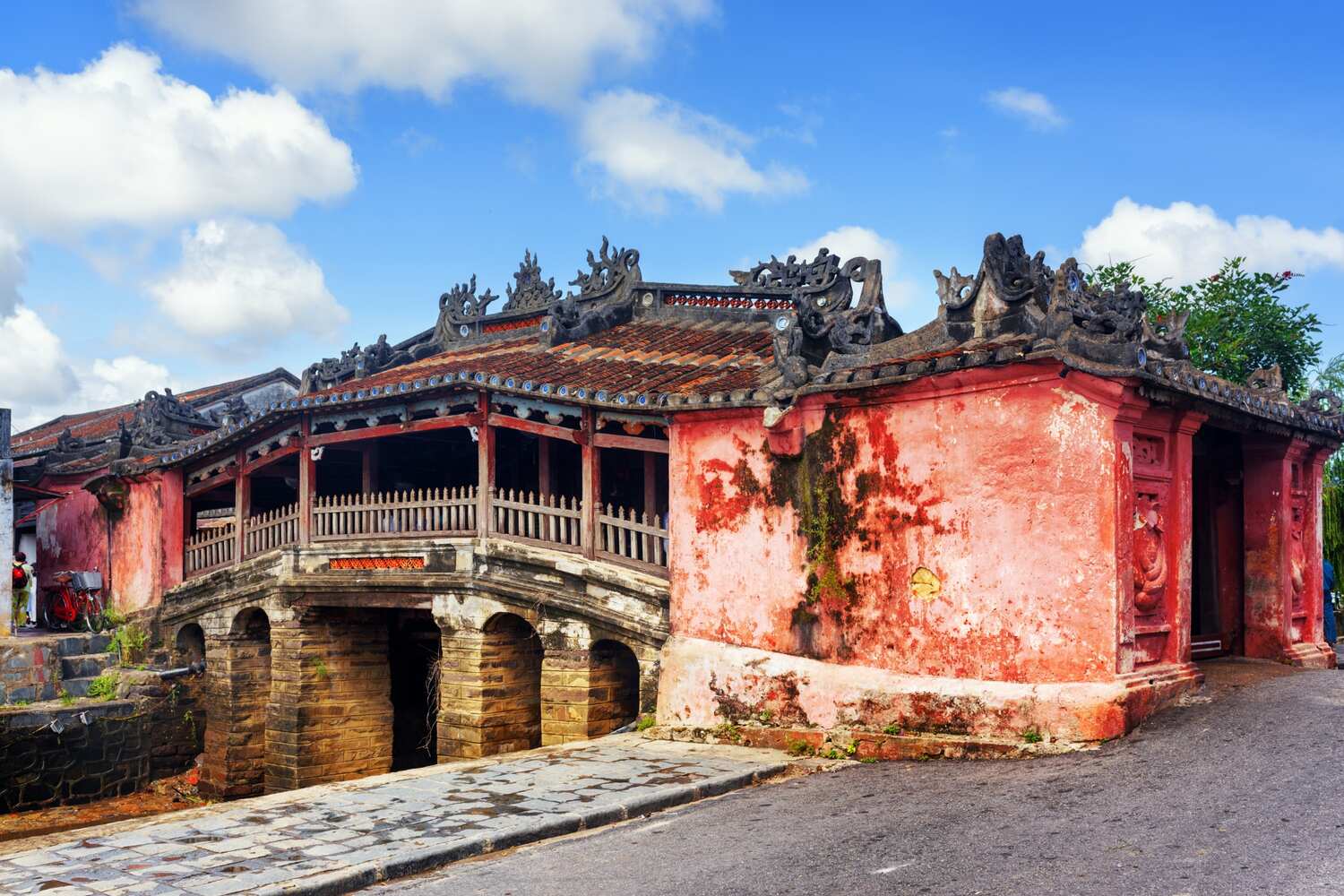
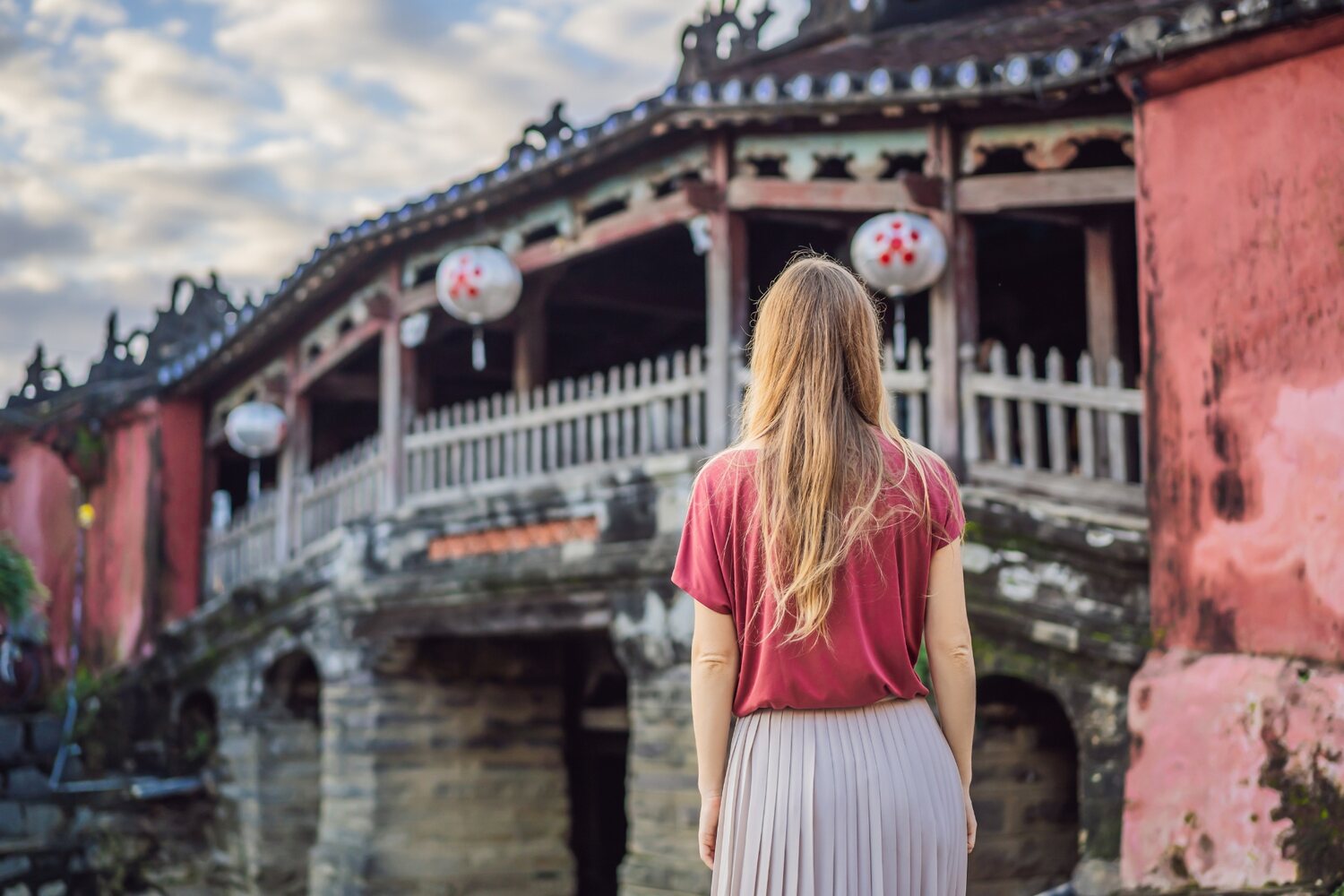
The Architecture of the Japanese Bridge
The Japanese Bridge in Hoi An is known for its unique and intricate architecture. It is primarily built with red lacquered wood, showcasing the influence of Vietnamese, Japanese, and Chinese cultures.
The bridge features a stunning curved roof adorned with yin and yang patterns, representing Vietnamese culture. The incorporation of these patterns symbolizes the balance and harmony between opposing forces, a central theme in Vietnamese philosophy.
The architectural design also includes small corridors that allow visitors to traverse the bridge and admire the surrounding scenery at a leisurely pace. These corridors create a sense of intimacy and provide a peaceful atmosphere for visitors to enjoy.
At the entrance and exit of the bridge, you will find statues of a dog and a monkey. In Japanese culture, the dog represents loyalty and protection, while the monkey symbolizes safety and warding off evil spirits. These statues add a touch of cultural symbolism and contribute to the overall aesthetic appeal of the bridge.
The combination of red lacquered wood, yin and yang patterns, small corridors, and dog and monkey statues make the architecture of the Japanese Bridge in Hoi An truly unique and captivating.
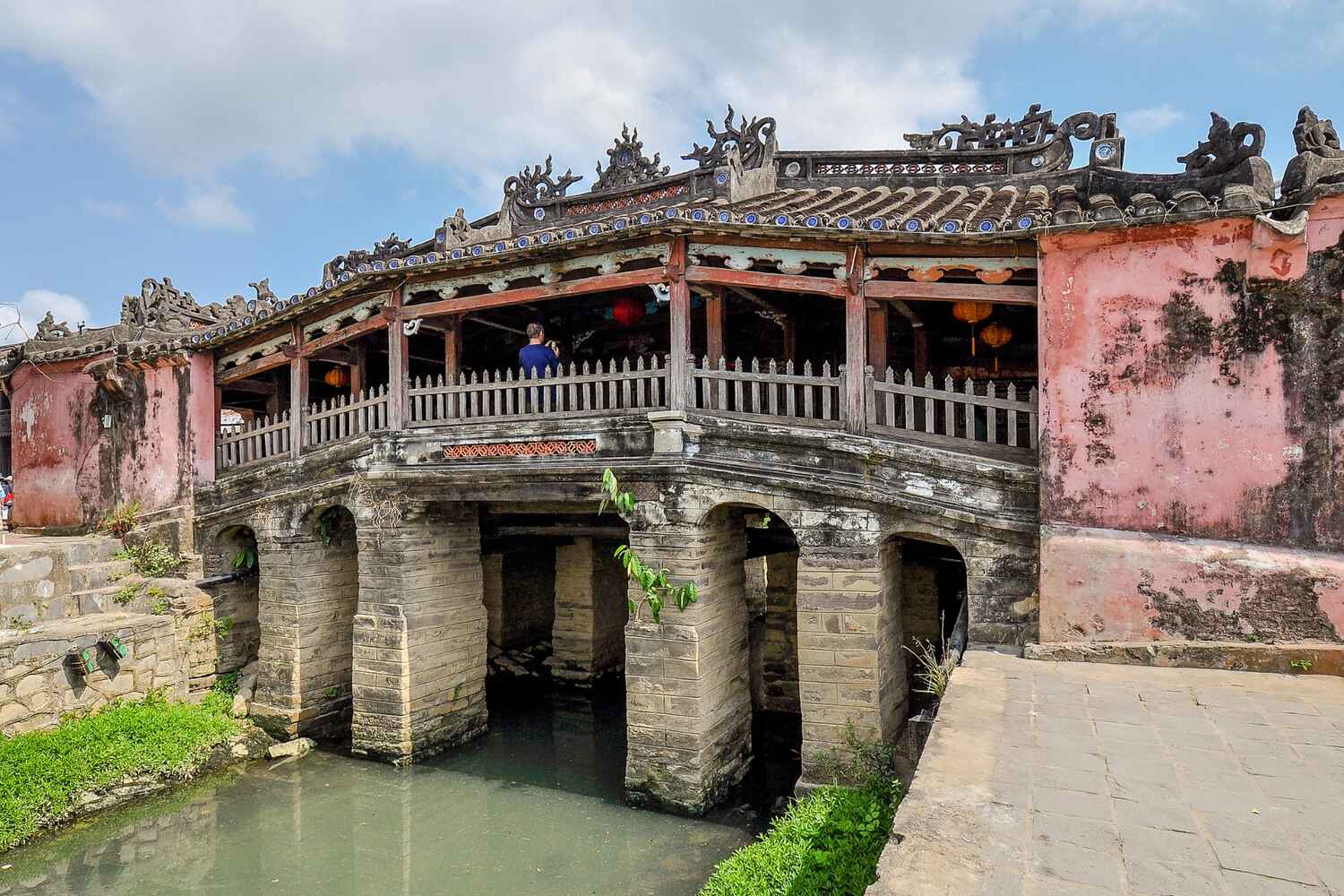
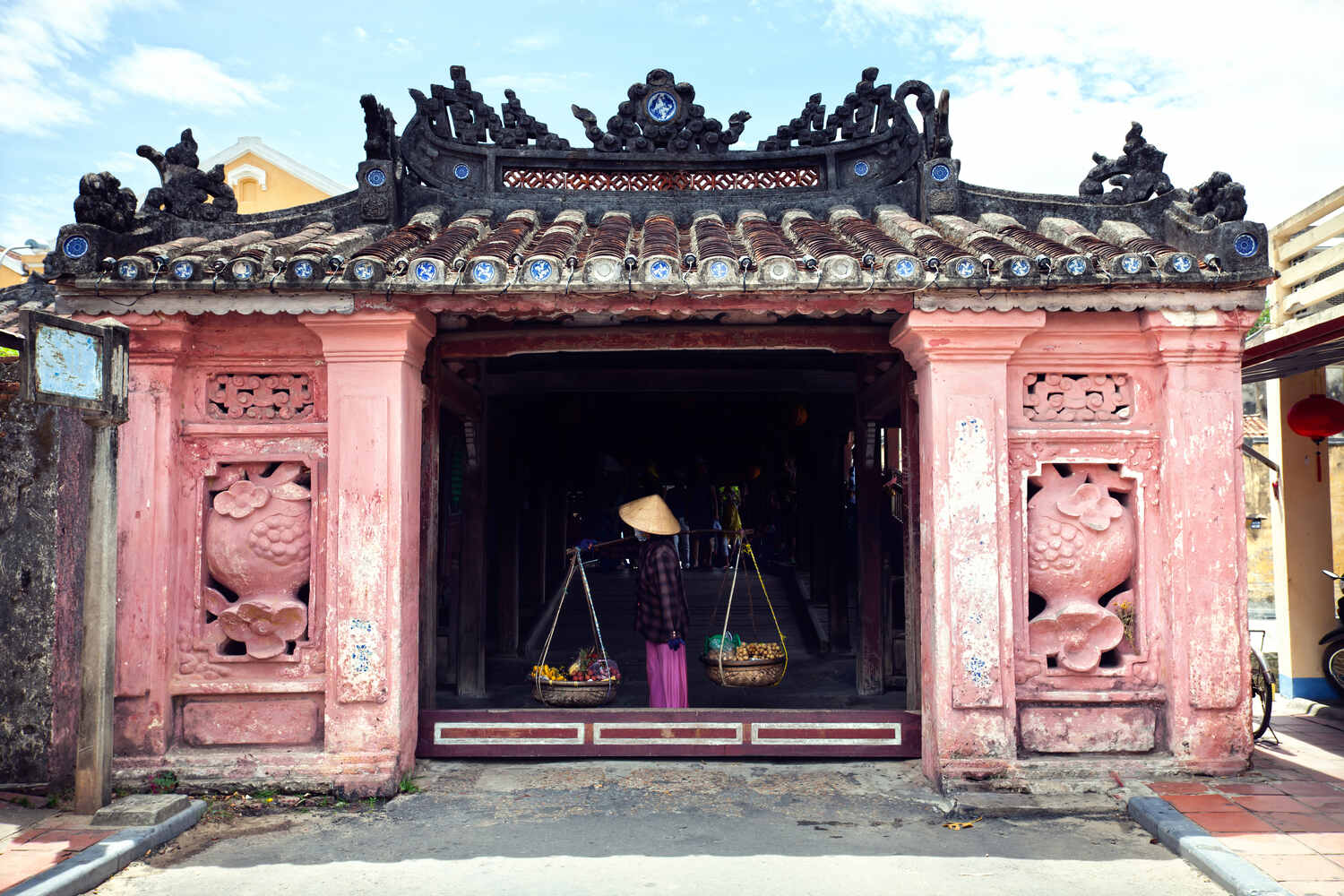
The Renovation of the Japanese Bridge
The Japanese Bridge in Hoi An has a long history of renovations and maintenance to ensure its preservation as a cultural and historical landmark. Over the years, the bridge has undergone several renovations to repair damages and maintain its structural integrity.
The first three renovations of the Japanese Bridge were credited to the Minh Huong Commune, a village located in Hoi An. These renovations were essential for addressing wear and tear, as well as repairing damages caused by natural elements and regular usage.
During the French colonial period, the bridge underwent modifications to accommodate motorized vehicles, reflecting the changing transportation needs of the time. These modifications aimed to enhance accessibility and convenience for locals and tourists alike.
In recent years, the Japanese Bridge has faced significant challenges due to flooding, causing deterioration and posing risks of collapse. The Quang Nam provincial government has recognized the urgent need for maintenance and preservation of this iconic structure.
A project has been approved by the Quang Nam provincial government to preserve the bridge, taking into account its cultural and historical significance, and as mentioned above, it will be under renovations until the end of 2024.
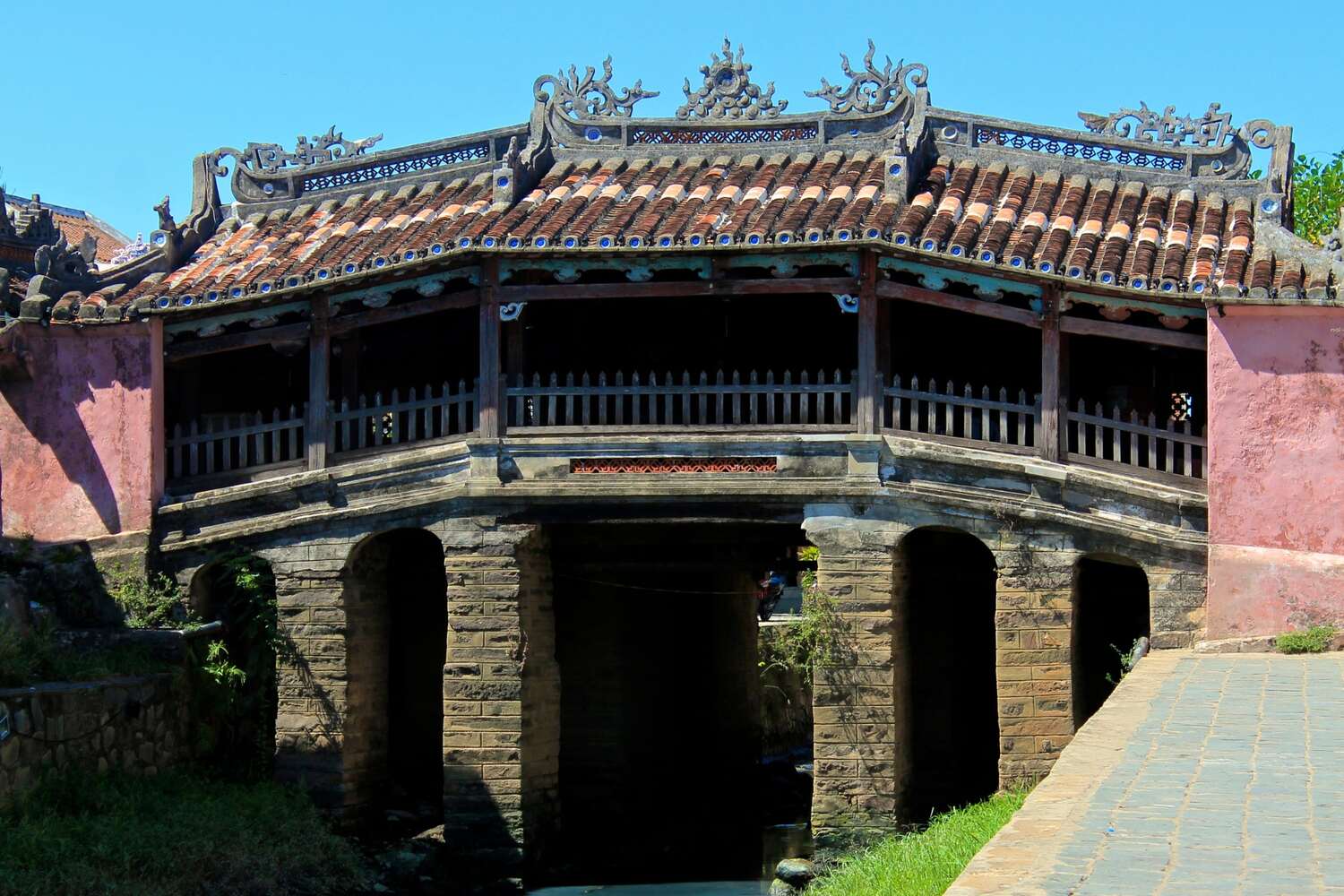
Conclusion
The Japanese Bridge in Hoi An is a cultural destination of immense historical significance and breathtaking architecture. As a symbol of Hoi An’s heritage, this renowned bridge has been acknowledged as a National Historic – Cultural Heritage Site, attracting visitors from around the world.
The architecture of the Japanese Bridge is a masterpiece that seamlessly blends elements from Vietnamese, Japanese, and Chinese cultures. From the vibrant red lacquered wood to the intricate yin and yang patterns on the roof, every detail tells a story of cultural exchange and artistic finesse.
However, to ensure the preservation of this magnificent structure for future generations, immediate maintenance is required. By exploring the Japanese Bridge, you not only immerse yourself in the town’s history but also appreciate the architectural beauty crafted over centuries.



